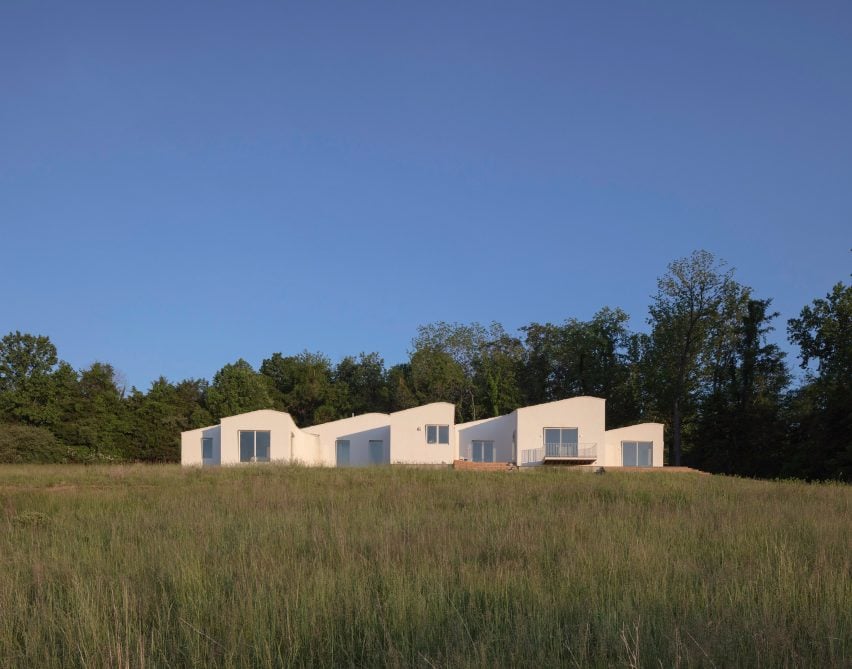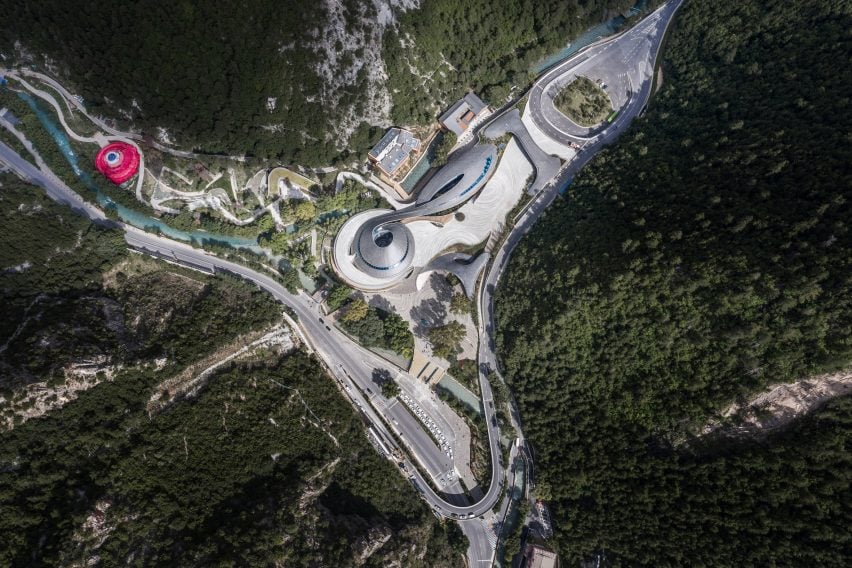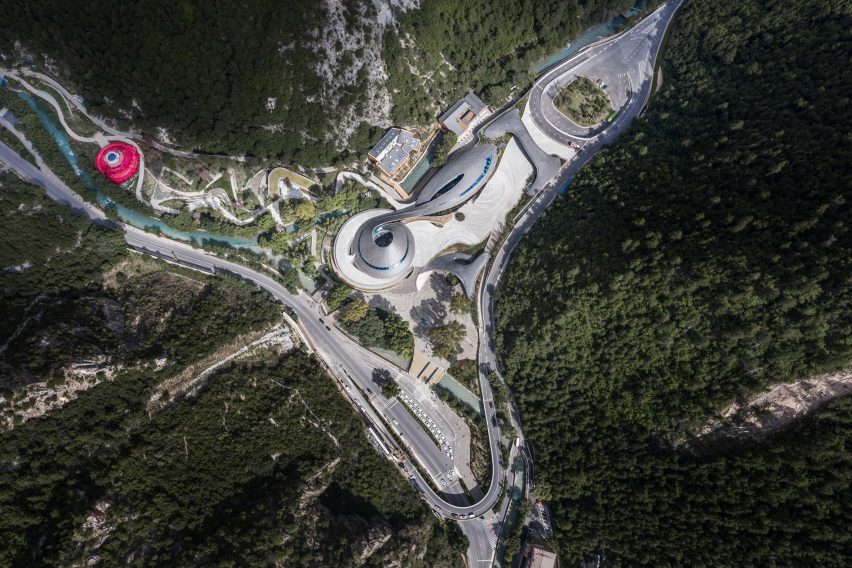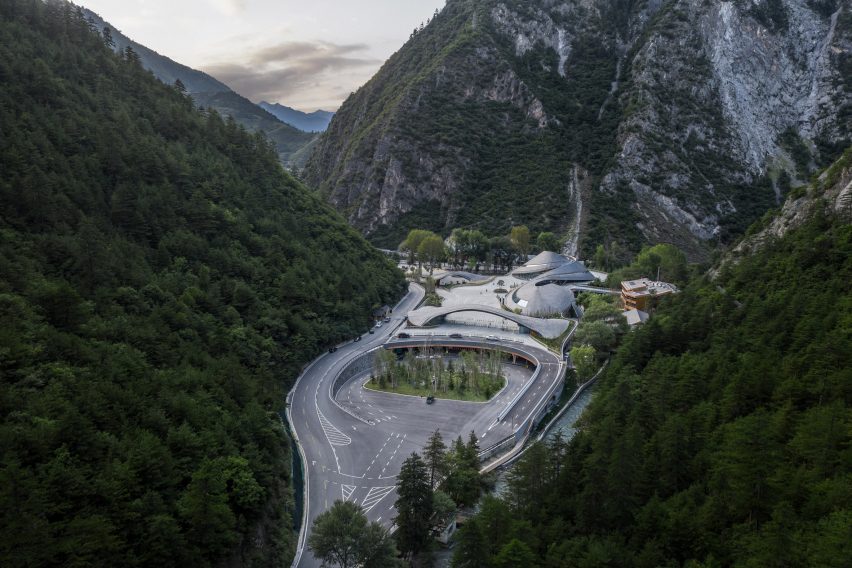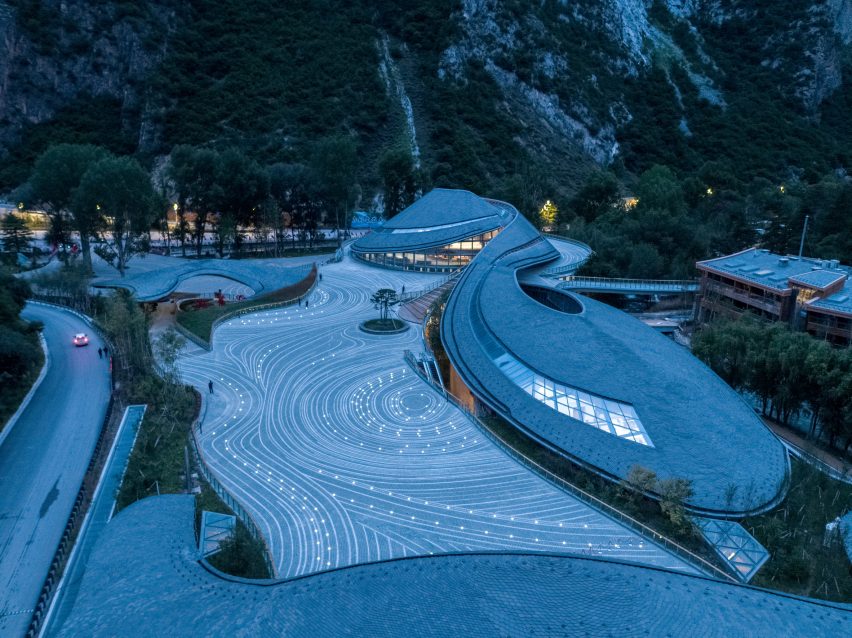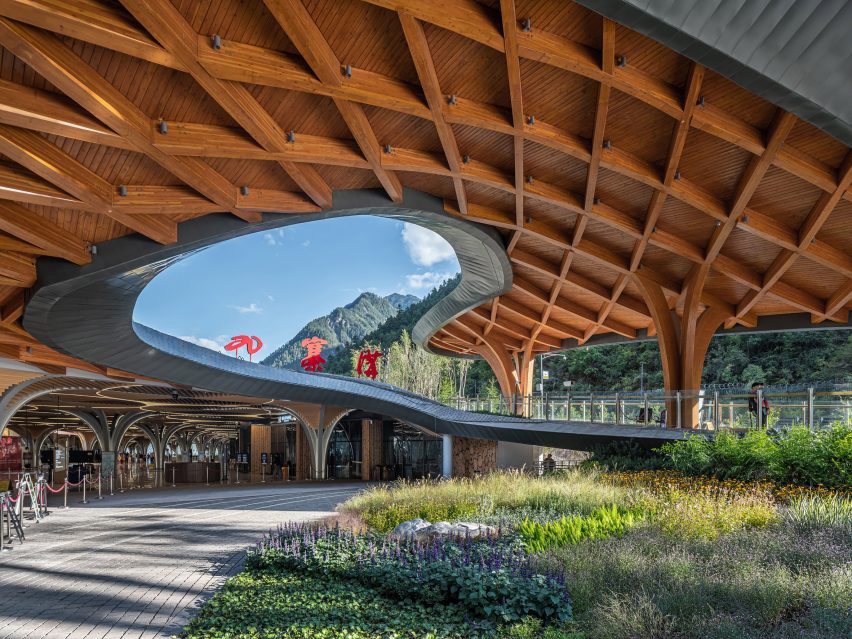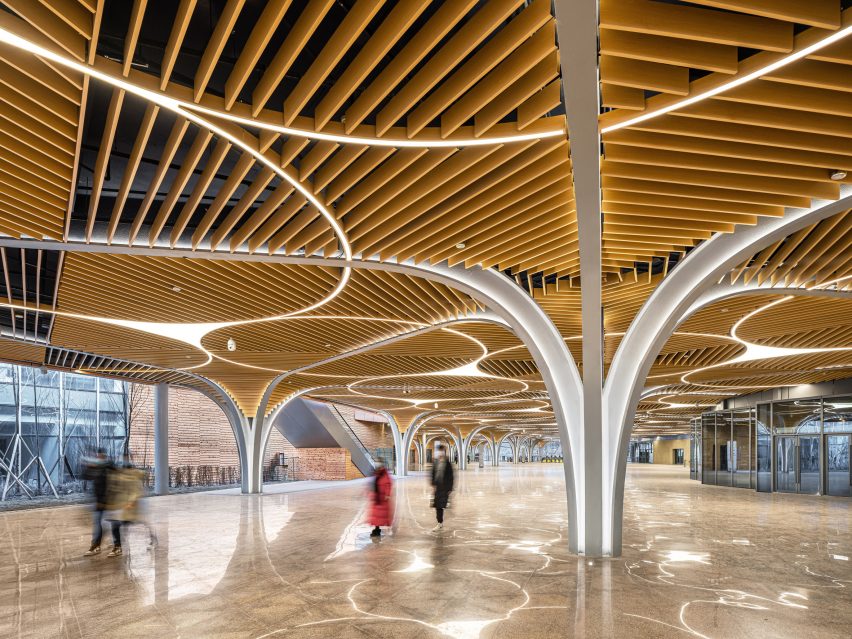Schaum/Shieh conforms house “gently” to contours of steep Virginia site
US architecture studio Schaum/Shieh has embedded a Virginia house with irregularly shaped volumes into the contours of a steep site.
Located in the Allegheny Mountains, the 2,750 square foot (255 square metre) Shenandoah House conforms to the topography of its hillside site “gently”, as Schaum/Shieh neither wanted to add a cantilever nor flatten the topography.
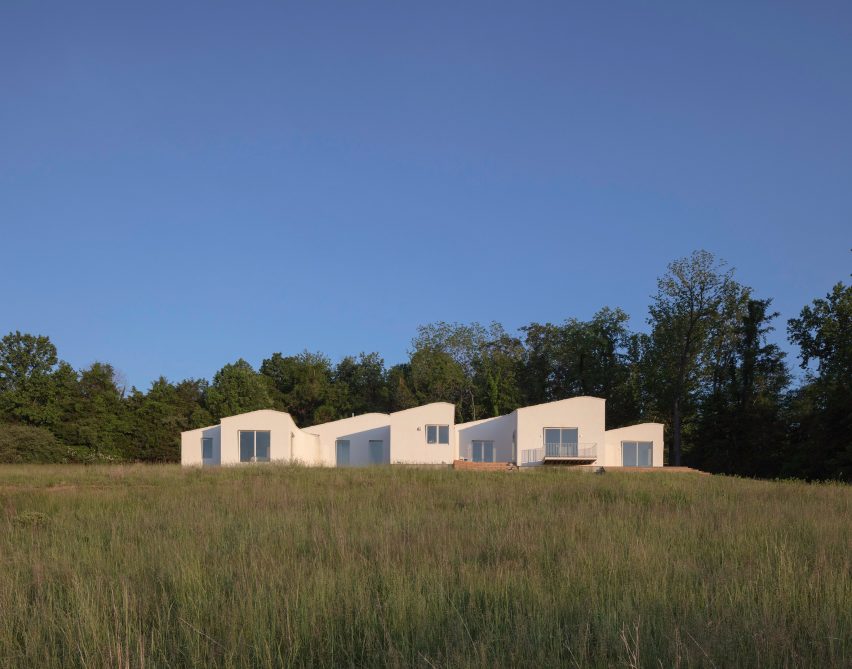
“We didn’t have the inclination to make dramatic use of the steepness with a cantilever, and we didn’t want to flatten any portion of the site to erase the slope, so we decided to build along the contours as much as we could,” said Schaum/Shieh co-principal Rosalyne Shieh.
The one-story home unfurls in a 120-foot-long (36-metre) horizontal line that runs parallel to the topography, with its front elevated to meet wooden terraces, and portions of the back sitting flat on the slope.
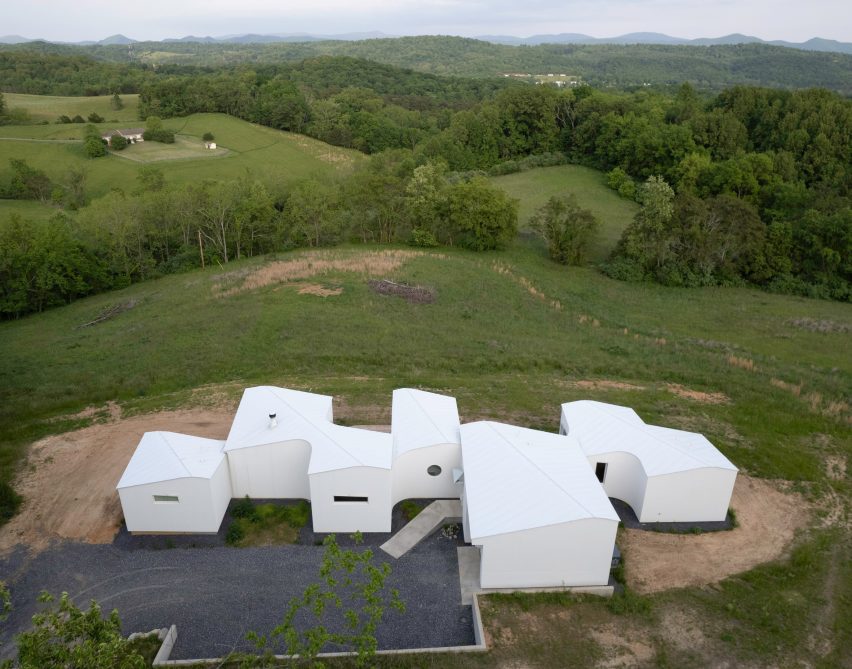
Along the footprint, three bedrooms, three bathrooms, a dining room, a living room, a study and a garage branch off a slim, central corridor in irregularly shaped volumes – or pods.
The spaces between each pod create room for gardens, outdoor nooks and wooden terraces along the house, while a parking area was carved out of the hillside at the back.
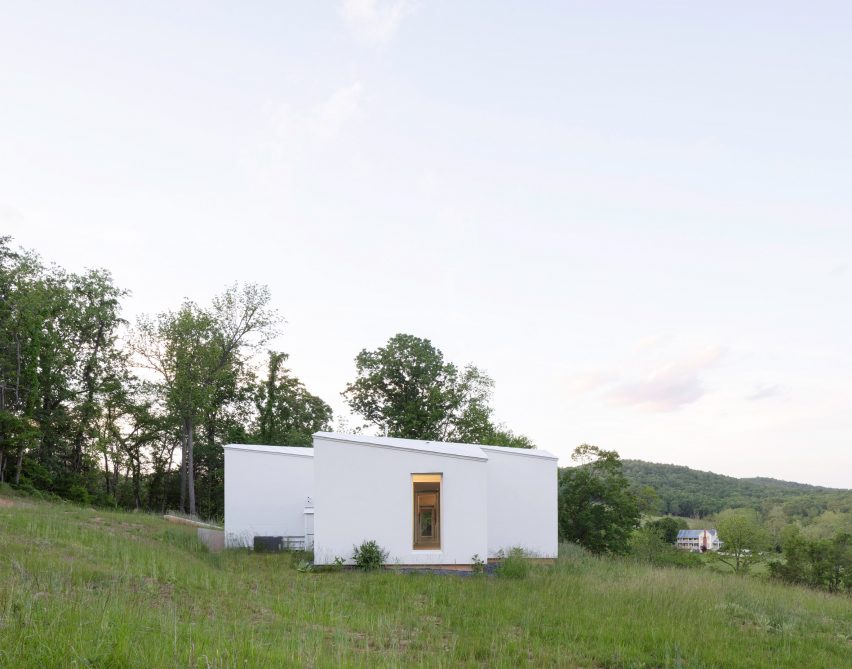
The grey metal roof reflects the area’s rolling hills. Each individual volume is topped with a rounded gable roof that runs diagonally across its centre so that the profiles dip and rise with the surrounding environment
“We discovered that by doubling the ridgeline and rounding the peak we could create a softness that reflects the sloped surroundings,” said Schaum/Shieh co-principal Troy Schaum.
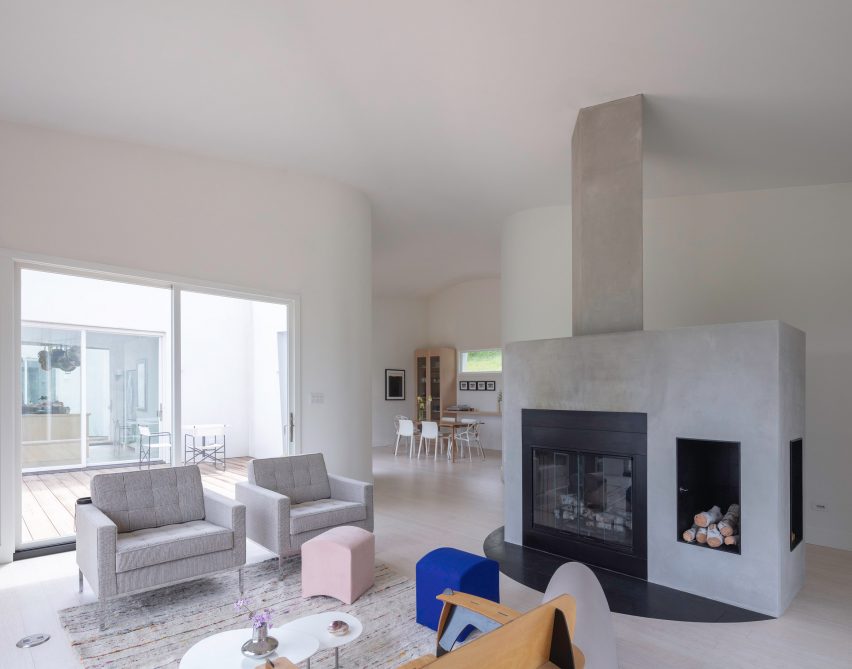
“It seemed appropriate on the hillside and took what was a simple, more functional logic and grounded it in the dynamic, undulating nature of the site.”
Rectangular windows on either end of the horizontal plan create an interrupted view through the centre of the house and large sliding glass doors and picture windows were installed on the facade.
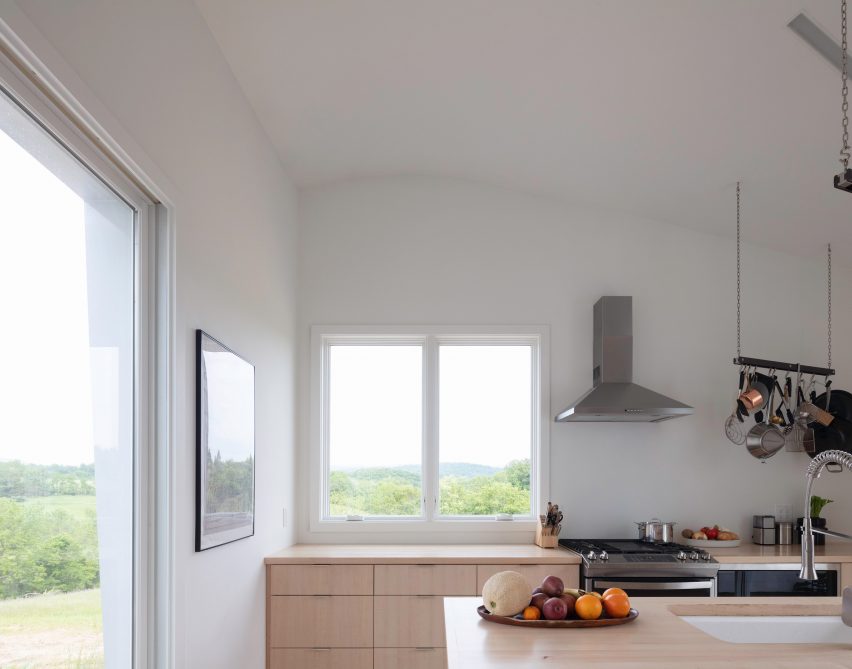
Small clerestory and porthole windows were placed on the uphill side.
Rounded corners on the home’s exterior are reflected on the interior, further softening a largely white interior palette.

“Lighting was also subtly integrated to create interrupted lines throughout the house,” said the team.
“No lights or other features interrupt the ceilings; instead, lighting emerges through slots at the ceiling edge and on the quasi-furniture objects that provide texture across the home.”
These furniture elements include bespoke wooden cabinetry, a large island, a wooden bed frame and a central wood stove unit made of concrete and soapstone.
The house is finished with bamboo wood floors and insulated stucco.
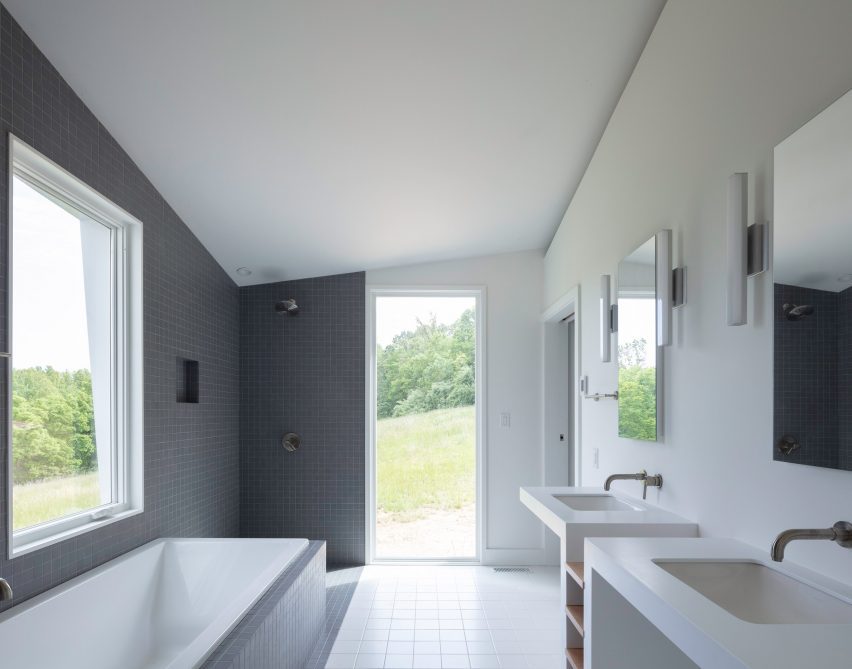
“The hillside as an old problem in house design was a major motivator. Our clients knew many hilly sites from growing up in the area and their time in Greece. We wanted to intervene gently but opportunistically into the hill,” said Shieh.
“They wanted a house that fit organically but was not derived from the local vernacular materials or solutions in a straightforward way. We focused on the hill, the seasons, the distant view, and the intimate life of the site.”
Other recently completed projects by Schaum/Shieh include a Houston art galley covered in white sculptural panels and a concert venue designed to endure “rough handling”.
The photography is by Naho Kubota.
Project Credits:
Architect: Schaum/Shieh
Design team: Troy Schaum, Rosalyne Shieh, Giorgio Angelini, Andrea Brennan, Tucker Douglas, Ane Gonzalez
Contractor: Blue Ridge Green – Jonathan Kuntz
Structural: Truesdell Engineering- Jordan Truesdell, PE

